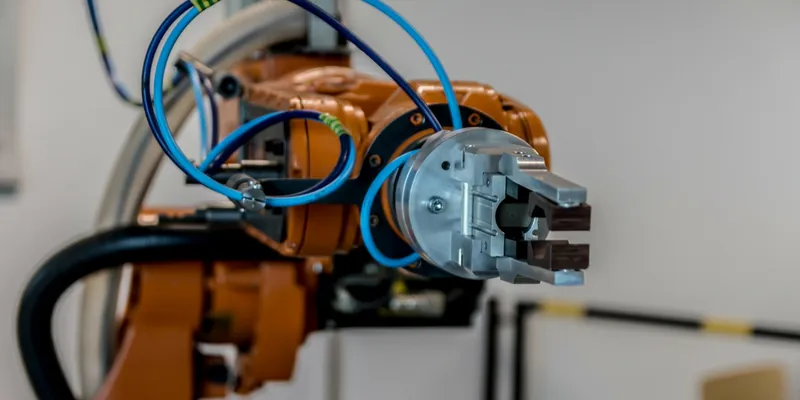Role of automation in the enlargement of the Indian manufacturing industry
The manufacturing sector has led to prosperity in many East Asian countries. Some leading economists and leaders had believed more than a decade ago that India held the potential to emulate the growth model of East Asian countries such as South Korea. By doing what South Korea had done, they felt India could duplicate the tremendous economic success that South Korea had already attained by then.

The vision of contemporary leaders
Today’s leaders also believe that it is the manufacturing sector and not services that will provide jobs for millions of unemployed Indians. Young Indians need manufacturing jobs as not everyone can work as a software engineer or BPO executive. To take advantage of the countries’ “demographic dividend”, the government, it is felt, needs to create manufacturing jobs that pay well enough for young men and women to support their families.
Currently, many leaders in India hope to create jobs and attract Foreign Direct Investment in India, transforming India into the next China. The mantra is that companies can sell anywhere they want but they should make in India first. A multi-billion dollar defence deal wherein a French Aircraft manufacturer was awarded a contract to supply fifth-generation fighter jets to the IAF, only if it agreed to procure certain inputs from within India, shows the importance the country’s leaders place on nurturing domestic manufacturing.
India’s leaders have set a target to increase the share of manufacturing to 25 percent of GDP by 2025 from its current 16 percent. Furthermore, it is also estimated that by 2025 India’s manufacturing sector can grow to be a $1 trillion dollar sector.
Automation in manufacturing
Conventional wisdom tells us that automation steals manufacturing jobs. Yet the industrial automation industry in India is expected to touch $3.5 billion by 2020, and by then the manufacturing sector alone is expected to create 90 million new jobs. It is widely agreed that automation makes manufacturing processes more efficient and leads to fewer defects. It is this increase in efficiency that is leading many Indian manufacturers to automate processes. Demand for factory automation has given an impetus to the industrial automation industry in India. Industries in India like the automotive, chemicals, and mining industry are automating processes and making such processes more innovative.
Automation raises living standards
As of 2018, many factory owners in China fear that they cannot compete with factories in lower-cost nations like Vietnam. Wages for certain jobs in China have risen to $1,000 per month and so factories in China are losing their low-cost manufacturing edge. Owners of such factories believe that they have no choice but to automate. Thinking of automation as a tool that allows manufacturers to produce more than they could before is accurate. It is only by using better tools that standards of living have risen. Had this not been the case, standards of livings would have remained similar across the globe.
Automation may eliminate some jobs yet the companies that engage in automation do so because it saves them money. These savings are then passed on to consumers who then use these savings to spend on different goods or services that they would not have purchased had the savings not been passed on to them. This spending by consumers then creates new jobs in other parts of the economy and allows the economy to expand. Hence the process of “Creative Destruction” cherished by so many politicians and economists plays its part and creates more jobs than it eliminates.
A balance between workers and automation
India may not be too late to take advantage of the manufacturing-led growth model that led Japan and other East Asian companies to reach the status of economic superpowers. Because of its large and young population, India needs to be able to create enough worthwhile manufacturing jobs for all of its citizens. The country is however poised to take advantage of the boom in automation as a means to increase productivity and to raise the standards of living for its citizens as well. Some low-cost manufacturing jobs may go to smaller Southeast Asian countries like Vietnam, yet it’s desirable that most should come to India.
A country as large as India, in 2018, can use automation in tandem with its huge demographic dividend to create a manufacturing base. This manufacturing base may produce goods made on production lines using human hands while also manufacturing increasingly more sophisticated products using automation. Many companies in India, even in the face of global competition, can manufacture goods more efficiently than companies in other countries. If manufacturers in China fear that they have to automate due to a low-cost threat from Vietnam, they should have even more reason to fear a threat from India due to India’s vastly greater technical expertise and know-how.
Maximizing the efficiency of the entire economy is crucial for economic success. Most Indian manufacturers today are not at a stage where they can automate most of their processes, yet those that can automate processes should certainly do so. Over the next decade, by using the best of automation and human capital, Indian industry may fulfil its true potential, something that has eluded it thus far.
Kavita Nigam is General Manager – HR and Publicity & Promotion at KARAM Industries.
(Disclaimer: The views and opinions expressed in this article are those of the author and do not necessarily reflect the views of YourStory.)







